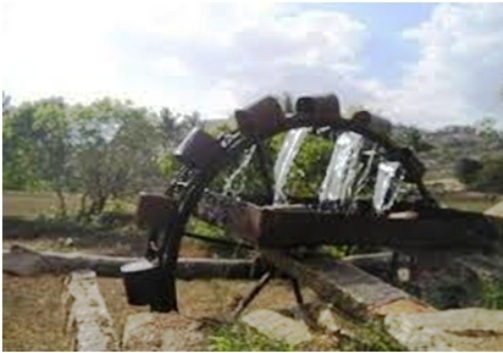Bihar, undivided. 52 years ago. It’s 1967. The sun shines brightly overhead. Scorching heat, the clay-baked dry fields are riddled by cracks through which the last drops of water have evaporated.
Along a railway siding, one can see people scrabbling in the dust, in a desperate attempt to scoop up the loose grains that may have trickled from a passing relief train. The newspaper reports at that time say that the poor are desperate to fill their empty stomachs; digging up roots, wild tubers, foraging for leaves and Mahua flowers. Three years have passed and the monsoons have failed miserably each year. In many villages, for miles around there isn’t a drop of potable water. That was the face of the great Bihar famine.
Available records show that a the time, undivided Bihar has the 2nd highest population in India. More than 40,000 people left their villages in search of food and employment, according to the Bihar IPRD at the time. There was acute shortage of water and total failure of crop. The Agrarian rain-dependent structure was greatly disturbed.

For three years there was complete failure of monsoon; thus complete failure of crops. A year ago, Bihar was visited by a double calamity; a devastating flood in North Bihar, and simultaneous drought conditions in central and south Bihar. The rivers of South Bihar are predominantly rain-fed. They run rapidly during the monsoons and then shrink or disappear for the rest of the year.
In the Kharif season of 1966, there was drought in South Bihar. It caused serious decline of Food-grain less than 25% of the normal. Out of every 10 people, three were landless, bonded labourers. The then chief minister of Bihar Mahamaya Prasad Sinha called for humanitarian help.
Catholic Charities intervene
Among the first to respond was the Catholic Church, in the person of Robert Donahue SJ. For two years the rains had been insufficient, fields produced no crops, and millions of people were faced with starvation. It was Fr Donahue who swung into action and got help from CRS, CARE, OXFAM, Misereror and other voluntary organisations. Incidentally, it was Fr Donahue who was one of the founding members of Bihar Association of Voluntary Agencies, whose first president was Lok Nayak Jay Prakash Narayan. When JP died, Fr Robert was elected to succeed him.
Fr Donahue SJ at the time was residing in Kudra (in Rohtas district). He came forward with others formed Catholic Charities. (later on Catholic Charities was to take up development work in a focussed way in South Bihar (now Jharkhand).

It was Father Donahue, who came to the conclusion that the one way to avoid famine was to ensure that people have access to water sources, and that is how the Bihar Water Development Society took shape.
BWDS SPRINGS UP
The pioneers conceived the idea of a ‘productive Human chain’ for the social and economic upliftment of the distressed and depressed people who were at the periphery of life and development.
In its early phase, BWDS concentrated on developing of both surface and tube wells in the arid areas of Rohtas District in Bihar. It continued water development projects, e.g., Drilling of tube wells, Constructions of surface wells and other development project related to agriculture and irrigation for first 18 years.
Later, visualizing the long term need of a non Government humanitarian development organization, the Catholic Charities started to work with two new wings for two different regions of Bihar based on different geographical and population characteristics.
A new organization was registered with a name “Bihar Water Development Society” on 14th December, 1967 with Head Office at Patna and branch office in Kudra. It started working as full-fledged social development organization for the South Bihar districts comprising Shahabad, Patna, Gaya, Munger and Bhagalpur, now serves in 10 districts of Central and South Bihar.

The tube well Program: For assured irrigation, the tube wells program was also prime focus of BWDS. For this rotary German Rigs were used. They were direct mud rotary Rigs and very effective in water alluvial formation soil.
The average depth of a tube well is 257’ and the diameter is 4” or 6” as required by individual farmers. The water discharge from such tube well is approximately 10,000 gallons per hour. With proper irrigation channels the farmers can easily irrigate 10 to 15 acres of land and thus is able to raise two to three crops in a year.
The introduction of these water sources greatly helped the people who lived where the BWDS operated. The crop situation improved tremendously.
This is just one example of how the tiny Catholic Community came forward to help Bihar to deal with an economic crisis.
Bihar Water Development Society went on to achieve many successes in Bihar, and we will tell you that story as well.
Written by Frank Krishner with inputs from Priyanka Yaduvanshi

